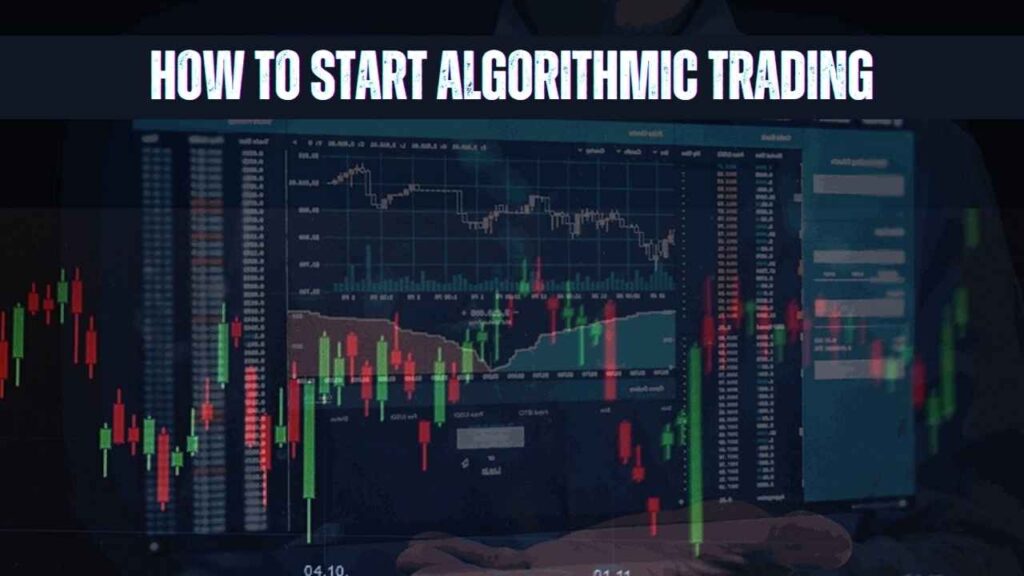Algorithmic trading has become extremely popular among institutional and retail investors over the last few years. As technology improves, computational power has increased, and market access has improved; algorithmic trading provides a competitive advantage by placing trades at optimal prices in less than a second.
This guide is intended to assist you in learning about what algorithmic trading is, why it’s useful, and how to begin trading with your own or pre-built algorithms. Whether you’re a beginner to trading or wish to advance your strategies, this detailed guide offers practical steps, best practices, and necessary tools to begin your algorithmic trading experience.
What is Algorithmic Trading?
Algorithmic trading, commonly known as “algo trading” or “black-box trading,” employs computer programs and algorithms to automatically execute trades. These algorithms decide based on a set of rules predetermined by technical analysis, statistical models, or both. The major characteristics of algorithmic trading are:
- Speed and Efficiency: Algorithms can place trades in milliseconds, capturing opportunities that human traders might miss.
- Elimination of Emotional Bias: Automated systems follow predetermined strategies, reducing the influence of human emotions such as fear and greed.
- Scalability: Algo trading can handle multiple trades and large volumes simultaneously, which is particularly useful for high-frequency trading.
- Backtesting: Traders can test strategies using historical data before deploying them live, ensuring their viability under various market conditions.

Why Start Algorithmic Trading?
Advantages of Algorithmic Trading
- Enhanced Trading Precision: Automated trading systems execute orders based on strict criteria, improving accuracy and reducing the risk of error.
- Time Savings: With automated systems, traders can monitor multiple markets and execute trades without constantly watching the screens.
- Consistency: By adhering to pre-determined rules, algorithms ensure consistent trading behavior without deviations caused by emotions.
- Cost-Effectiveness: Algo trading can reduce transaction costs by minimizing human error and optimizing trade execution.
Potential Challenges
- High Initial Learning Curve: Developing an algorithm requires a strong understanding of programming and financial markets.
- Market Over-Optimization: Strategies that work well on historical data may not perform as expected in live markets.
- Technical Issues: System glitches or network issues can disrupt automated trading, leading to unexpected losses.
- Risk Management: Even automated systems can incur significant losses if not properly monitored and adjusted for market volatility.
How to Start Algorithmic Trading: Step-by-Step Guide
Step 1: Educate Yourself About the Basics
Before diving into algorithmic trading, it’s essential to understand both the financial markets and programming fundamentals.
- Learn the Basics: Understand key trading concepts, technical analysis, and quantitative strategies.
- Study Programming Languages: Python and R are popular choices for algorithmic trading due to their extensive libraries and community support.
- Online Courses & Webinars: Enroll in online courses that cover algorithmic trading, coding for finance, and data analysis. Platforms like Coursera, Udemy, and Khan Academy offer valuable resources.
Step 2: Define Your Trading Strategy
A solid trading strategy is the cornerstone of successful algorithmic trading.
- Identify a Market: Choose the financial instruments you want to trade (e.g., stocks, commodities, forex).
- Develop a Trading Idea: This could be based on technical indicators, momentum, mean reversion, or statistical arbitrage.
- Set Clear Entry and Exit Rules: Define the conditions under which you will enter and exit trades, along with risk parameters like stop-loss and take-profit levels.
Step 3: Gather and Clean Historical Data
Historical data is essential for backtesting your strategy.
- Data Sources: Use reliable sources like Quandl, Yahoo Finance, or your broker’s platform to obtain historical price data.
- Data Cleaning: Ensure the data is accurate and free from anomalies. This step is critical for effective backtesting.
Step 4: Build and Backtest Your Algorithm
Start coding your trading strategy and test it using historical data.
- Use Algorithmic Trading Platforms: Tools like QuantConnect, MetaTrader, or custom Python scripts with libraries such as Pandas, NumPy, and Backtrader can help you build your algorithm.
- Backtesting: Run your strategy against historical data to evaluate its performance. Look for metrics like Sharpe ratio, maximum drawdown, and win rate.
- Iterate and Optimize: Refine your strategy based on backtesting results. Avoid overfitting by ensuring your algorithm performs well across different market conditions.
Step 5: Set Up a Trading Account and Connect Your Algorithm
Once you’re confident in your strategy, it’s time to transition to live trading.
- Choose a Brokerage: Select a broker that supports algorithmic trading and offers an Application Programming Interface (API) for automated trades.
- Demo Trading: Start with a demo account to simulate live trading conditions without risking actual money.
- Live Deployment: Gradually transition to a live trading environment, monitoring your algorithm’s performance closely.
Step 6: Monitor, Evaluate, and Improve
Even after deploying your strategy, continuous monitoring is crucial.
- Real-time Monitoring: Use dashboards and alerts to keep track of your algorithm’s performance.
- Performance Analysis: Regularly review key performance indicators (KPIs) like returns, drawdowns, and trade frequency.
- Adapt and Improve: Markets evolve, so it’s important to update your algorithm based on new data, insights, and changing market conditions.
Additional Tips for Successful Algorithmic Trading
- Maintain Discipline: Stick to your trading plan and resist the urge to change your strategy based on short-term market movements.
- Manage Risks: Use proper risk management tools, such as stop-loss orders and diversified allocation, to mitigate potential losses.
- Stay Informed: Keep up with market news, technological advancements, and regulatory changes in the financial markets.
- Join a Community: Engage with online forums, social media groups, or professional networks where experienced algorithmic traders share insights and strategies.
- Learn Continually: The world of algorithmic trading is ever-changing. Invest in continuous learning through courses, workshops, and seminars.
Final Thought
Algorithmic trading brings the art of trading together with the strength of technology. For newcomers, the process is about learning, testing, and step-by-step implementation of a strong, well-designed strategy. Though it provides the potential for great returns and better risk management, success in algorithmic trading needs discipline, ongoing learning, and rigorous testing. Following the instructions provided in this guide and utilizing the appropriate tools and resources, you can get into the exciting arena of algorithmic trading and use its power to change your financial future.
Frequently Asked Questions (FAQ)
Q1. What is algorithmic trading?
A: Algorithmic trading relies on computer programs and algorithms to make trades automatically according to pre-set rules, avoiding emotional bias and enhancing efficiency.
Q2. Why is backtesting important in algorithmic trading?
A: Backtesting tests how a trading strategy would have played out using past data and assists in gauging its strengths and weaknesses before actual money is on the line.
Q3. Which programming languages are commonly used in algorithmic trading?
A: Python and R are used because they have large libraries of data analysis functions and can be easily integrated into trading platforms. C++ and Java are also used.
Q4. Can beginners succeed in algorithmic trading?
A: Yes, provided they have the right education, practice with demo accounts, and controlled risk management, beginners can be successful in algorithmic trading.
Q5. What platforms are recommended for building algorithms?
A: Popular platforms are QuantConnect, MetaTrader, and bespoke Python-based solutions with libraries such as Pandas and Backtrader.










